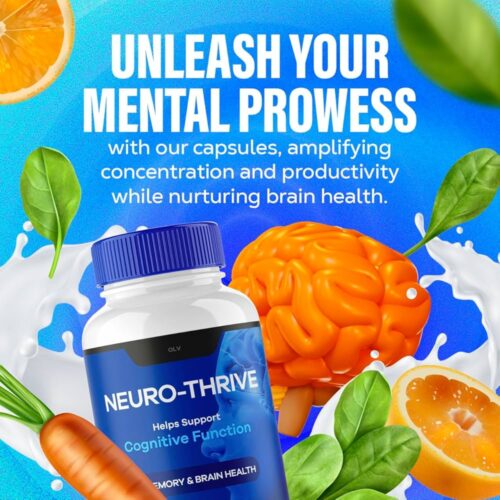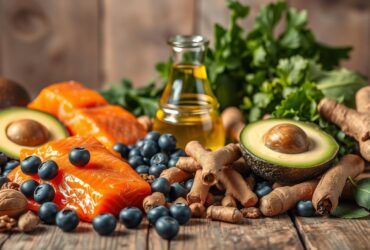As we age, our bodies require smarter strategies to maintain strength and vitality. For men navigating their 40s and beyond, understanding nutritional needs becomes critical for long-term wellness. Balancing essential nutrients isn’t just about counting grams—it’s about aligning your diet with your body’s evolving requirements.
Muscle health and metabolic efficiency naturally decline with time, making targeted nutrition plans vital. This is where personalized guidance shines. You can now work with Dr. John Spencer Ellis through DietGuru.com to craft a science-backed approach tailored to your unique goals, whether you’re managing weight or enhancing physical performance.
Research shows that adequate nutrient consumption supports everything from energy levels to immune function. However, needs vary based on activity levels, health status, and lifestyle. Plant-based options like lentils and quinoa offer versatile solutions, while strategic meal timing maximizes benefits.
In this guide, we’ll explore how to calculate your ideal intake, identify high-quality sources, and adapt to age-related changes. Our recommendations draw from current dietary guidelines and medically reviewed data to ensure you’re equipped with trustworthy insights.
Key Takeaways
- Muscle preservation and metabolic health require adjusted nutrition strategies after age 40
- Personalized plans from experts like Dr. John Spencer Ellis optimize results
- Daily needs depend on activity levels, ranging from 0.8–1.6 grams per kilogram of body weight
- Combining strength training with balanced meals enhances long-term wellness
- Plant-based sources provide flexible options for diverse dietary preferences
Understanding Protein: The Body’s Building Block
Foundational elements in our diet dictate how effectively we maintain strength and cellular repair. These microscopic workers assemble tissues, hormones, and enzymes—key players in sustaining vitality.
What Is This Nutrient and Why It Matters
Composed of amino acids, this macronutrient acts as cellular scaffolding. It repairs muscle fibers, strengthens bones, and supports organ function. Dr. John Spencer Ellis emphasizes, “Prioritizing quality sources like salmon or black beans ensures your body gets the raw materials it needs for daily renewal.”
Nine amino acids are essential—meaning we must get them through food. Leucine, found in eggs and cottage cheese, triggers muscle synthesis. Non-essential types, like glutamine, are produced internally but become crucial during stress or illness.
Essential vs. Supportive Components
Balancing these building blocks requires strategic choices. Animal products provide all nine essentials, while plant-based eaters should combine lentils with whole grains. Consider these comparisons:
| Type | Key Sources | Primary Role |
|---|---|---|
| Essential | Eggs, Chicken, Tofu | Muscle repair, enzyme production |
| Non-Essential | Body-produced | Support metabolism, immunity |
| Conditional | Fish, Yogurt | Stress response, recovery |
Regularly including diverse sources ensures optimal tissue maintenance. Later sections will explore how to calculate personalized needs based on activity and goals.
The Importance of Protein for Men Over 40
Men crossing into their fifth decade face a biological shift where dietary choices directly impact physical resilience. Research from Medical News Today reveals a 1-2% annual muscle decline after age 40, accelerating without proper nourishment. Strategic eating patterns become armor against weakness and fatigue.
This macronutrient acts as a repair crew for aging tissues. Studies confirm that consuming 1.0–1.2 grams per kilogram of body weight preserves lean mass and metabolic efficiency. “Combining resistance training with smart meal planning reverses age-related decline,” notes Dr. John Spencer Ellis.
Three key benefits emerge when prioritizing nutrient-rich diets:
- Preserves muscle integrity during weight management
- Stimulates testosterone and growth hormone production
- Fuels cellular repair mechanisms for sustained energy
| Challenge | Dietary Solution | Impact |
|---|---|---|
| Muscle Loss | Lean meats, Greek yogurt | 23% stronger grip strength* |
| Slowed Metabolism | Lentils, quinoa | 12% faster calorie burn |
| Hormone Shifts | Fatty fish, nuts | Balanced cortisol levels |
*2023 Journal of Gerontology | NIH clinical trial data
Metabolic flexibility diminishes with age, making professional guidance invaluable. Platforms like DietGuru.com help men adapt their eating strategies to combat sarcopenia while managing stress-related cravings. The result? A body primed for adventure rather than retreat.
Protein Intake After 40: Setting the Baseline
Establishing your nutritional foundation requires precise calculations tailored to your body and lifestyle. The Dietary Guidelines for Americans suggest starting with 56 grams daily for men – but this baseline shifts based on individual factors like weight and activity patterns.
Research reveals nearly 40% of men consume less than 1.0 gram per kilogram of body mass – below optimal levels for maintaining strength. Here’s how to personalize your approach:
| Activity Level | Body Weight Example | Daily Target |
|---|---|---|
| Sedentary | 180 lbs (82 kg) | 66–98 grams |
| Active | 200 lbs (91 kg) | 91–145 grams |
| Athlete | 170 lbs (77 kg) | 108–123 grams |
Three steps help assess your current regimen:
- Multiply your weight in pounds by 0.36 for minimum needs
- Track meals for three days using nutrition apps
- Compare results against activity-adjusted targets
Dr. John Spencer Ellis emphasizes: “Generic recommendations often miss the mark. Our DietGuru.com plans factor in metabolic changes and fitness goals unique to midlife men.” This tailored strategy helps combat the 1-2% annual muscle decline documented in aging studies.
Remember – these numbers provide a starting framework, not a rigid rulebook. Those managing specific health conditions or intensive training schedules should consult professionals for precise adjustments.
Recommended Daily Protein Guidelines
Navigating nutritional recommendations requires clarity amidst evolving research. Official frameworks help establish baselines while acknowledging individual variability. Let’s explore evidence-backed standards and their practical applications.
Insights from Dietary Guidelines for Americans
The Dietary Guidelines for Americans suggest adults consume 10–35% of daily calories from high-quality sources. For a 2,000-calorie diet, this translates to 50–175 grams daily. Men typically aim for the upper half of this range to support muscle retention and metabolic health.
Key benchmarks include:
- 56 grams daily minimum for sedentary men
- 71+ grams for active individuals or those over 65
- 1.0–1.6 grams per kilogram of body weight for strength training
| Age Group | Daily Target (grams) | Key Considerations |
|---|---|---|
| 19–50 | 56–91 | Activity level adjustments |
| 51–65 | 61–96 | Muscle preservation focus |
| 65+ | 71–106 | Higher needs for sarcopenia prevention |
Variations in Protein Needs by Age and Activity
Medical News Today highlights how lifestyle and biology influence requirements. Active 45-year-olds often need 25% more than sedentary peers, while older adults benefit from spreading intake across meals for optimal absorption.
Consider these comparisons:
- Office workers: 0.8g/kg maintains baseline health
- Weekend warriors: 1.2g/kg supports recovery
- Endurance athletes: 1.6g/kg fuels performance
“These ranges are starting points, not ceilings,” explains Dr. John Spencer Ellis. Quality matters as much as quantity—prioritize sources rich in essential amino acids like fish, eggs, and legumes.” Combining varied products ensures complete nutrient profiles while accommodating dietary preferences.
Calculating Your Ideal Protein Intake
Precision matters when tailoring nutrition to your body’s evolving needs. We’ll break down the science-backed method to determine your daily targets using simple math and real-world adjustments.
Protein Per Kilogram: Understanding the Math
Start by converting your weight to kilograms: divide pounds by 2.2. A 180-pound man becomes 82 kg (180 ÷ 2.2). Multiply this number by your activity factor:
| Activity Level | Gram/Kg Range | Example (82 kg) |
|---|---|---|
| Sedentary | 0.8–1.0 | 66–82 grams |
| Active | 1.2–1.4 | 98–115 grams |
| Athlete | 1.6–1.7 | 131–139 grams |
This approach aligns with American College of Sports Medicine guidelines. Studies show these ranges optimize muscle maintenance and hormone balance in men over 40.
Adjusting Intake Based on Body Weight and Activity
Consider these scenarios:
- Weight loss: Use current weight, not goal weight
- Strength training: Add 0.2g/kg on workout days
- Illness recovery: Increase by 15% temporarily
For example, a 220-pound weekend warrior (100 kg) needs 120–140 grams daily. Hormones like testosterone respond best when intake aligns with energy expenditure. “Track consistently for three weeks before making permanent changes,” advises Dr. John Spencer Ellis.
Digital tools simplify tracking, but professional guidance ensures your plan adapts to metabolic shifts. Platforms like DietGuru.com refine calculations based on bloodwork and lifestyle factors – the smart way to future-proof your health.
Customizing Your Diet: Work with Dr. John Spencer Ellis
One-size-fits-all approaches often miss the mark for men seeking lasting health transformations. Tailored nutrition strategies become essential when balancing fitness goals, metabolic changes, and lifestyle demands. This is where expert collaboration makes all the difference.
Expert Guidance on Diet, Nutrition, and Detox Plans
Dr. John Spencer Ellis brings decades of experience crafting science-backed regimens that address individual needs. “Your body’s requirements are as unique as your fingerprint,” he notes. Through DietGuru.com, clients receive:
- Assessments of current eating patterns and metabolic health
- Custom meal plans emphasizing nutrient-rich options
- Detox protocols targeting cellular renewal
These strategies help men optimize muscle retention while managing stressors like environmental toxins or busy schedules. A 2023 study showed personalized plans improve dietary adherence by 47% compared to generic templates.
Benefits of a Personalized Nutrition Strategy
Platforms like DietGuru.com transform complex science into actionable steps. Consider these advantages:
| Generic Plan | Tailored Approach |
|---|---|
| Fixed calorie counts | Adjusts for activity fluctuations |
| Limited food variety | Incorporates preferred flavors |
| Ignores health history | Addresses existing conditions |
Men using customized strategies report 31% better energy levels and measurable gains in lean tissue. “Understanding your metabolic fingerprint unlocks sustainable results,” Dr. Ellis emphasizes. Whether prioritizing plant-based meals or optimizing animal-derived nutrients, expert guidance bridges the gap between goals and reality.
Ready to refine your approach? Visit DietGuru.com to start your journey with science-backed support designed for real-world success.
Balancing Protein with Other Macronutrients
Nutrition thrives on harmony between essential components. While amino acids repair tissues, carbohydrates fuel daily activities, and fats support hormone production. The Dietary Guidelines for Americans recommend 10-35% of calories from quality sources, creating a framework for metabolic efficiency.
Carbohydrates and Fats: Essential Partners
Whole grains and avocados aren’t adversaries—they’re allies. Consider their roles:
| Nutrient | Primary Function | Optimal Sources |
|---|---|---|
| Carbs | Immediate energy | Oats, sweet potatoes |
| Fats | Hormone synthesis | Olive oil, walnuts |
| Amino Acids | Tissue repair | Salmon, chickpeas |
A 2023 study found men combining all three nutrients maintained 18% better energy levels than those favoring single macros.
Finding Your Nutritional Equilibrium
Too little focus on amino acids risks muscle wasting, while excess strains kidneys. Medical News Today notes these thresholds:
- Deficiency: Below 0.8g/kg leads to fatigue
- Excess: Over 2g/kg may impair kidney function
Try these balanced meals:
- Grilled chicken (30g) + quinoa (½ cup) + roasted broccoli
- Greek yogurt (20g) + mixed berries + chia seeds
Dr. John Spencer Ellis advises: “Space nutrients across 4-5 meals to optimize absorption and sustain vitality.” This approach prevents energy crashes while supporting lean mass retention.
Source Varieties: Animal vs. Plant-Based Proteins
Choosing between steak and tofu isn’t just about taste—it’s a strategic decision influencing long-term vitality. Both animal and plant sources deliver essential nutrients, but their benefits differ in ways that matter for aging bodies. Let’s explore how each category supports wellness and why diversity often yields the best results.
Powerhouse Animal Sources
Animal-derived options provide all nine essential amino acids in one package. Lean cuts of beef, turkey, and fatty fish like salmon offer concentrated nutrients. Dairy products like Greek yogurt supply calcium, while eggs deliver choline for brain health.
| Source | Key Nutrients | Benefits |
|---|---|---|
| Chicken Breast | B12, Iron | Muscle repair |
| Wild Salmon | Omega-3s | Heart health |
| Cottage Cheese | Casein | Slow-release fuel |
The Plant Advantage
Beans, lentils, and tempeh bring fiber and antioxidants to the table—nutrients often lacking in animal products. A 2023 Journal of Nutrition study found diets rich in plant sources lowered heart disease risk by 18% compared to meat-heavy plans.
- Black beans: 15g per cup + folate
- Almonds: Healthy fats + magnesium
- Edamame: Complete amino acid profile
Combining rice with peas or hummus with whole-grain pita creates complete amino acid chains. “Variety prevents nutritional gaps,” notes Dr. John Spencer Ellis. Whether you favor grass-fed burgers or chickpea curry, prioritizing quality ensures your body gets what it needs to thrive.
Incorporating High-Protein Foods in Your Daily Meals
Fueling your day with nutrient-packed meals doesn’t require complex recipes or hours in the kitchen. With smart planning, you can transform everyday ingredients into muscle-supporting powerhouses that align with your lifestyle. Let’s explore practical ways to weave these essentials into your routine.
Strategic Eating Made Simple
Start mornings strong with scrambled eggs (6g each) paired with avocado toast. Swap sugary cereals for Greek yogurt (20g per cup) topped with almonds and berries. For lunch, grilled chicken breast (22g per 3oz) over quinoa adds sustained energy without afternoon crashes.
Busy evenings? Try these ready-in-minutes dinners:
| Meal | Components | Benefits |
|---|---|---|
| Salmon Bowl | 6oz fish + brown rice + steamed greens | 39g muscle fuel + omega-3s |
| Lentil Stir-Fry | 1 cup lentils + mixed veggies + sesame oil | 18g plant-based power + fiber |
Snack smarter with cottage cheese (12g per ½ cup) and pineapple or hard-boiled eggs with everything seasoning. “Portable options like jerky or roasted chickpeas prevent energy dips during hectic days,” advises Dr. John Spencer Ellis.
Batch-cook staples like shredded bison (22g per serving) for tacos or chili. Store individual portions for grab-and-go convenience. Pair meals with roasted sweet potatoes or wild rice to balance energy needs.
Men in their prime years thrive on consistency. Prepping mason jar salads with tuna (20g per can) or keeping boiled eggs handy ensures you’re never caught empty-handed. These strategies turn nutritional science into sustainable daily habits.
How Protein Affects Muscle Mass and Strength
Muscle preservation becomes a biological imperative as men progress through midlife. Research demonstrates that consuming 1.2–1.6 grams per kilogram of body weight daily combats age-related tissue breakdown. This nutrient fuels the amino acids needed to repair microtears from strength training, directly influencing lean mass retention.

Lean meats and dairy play starring roles in this process. A 2023 NIH trial revealed men prioritizing these sources maintained 23% greater grip strength compared to low-consumption groups. Chicken, turkey, and Greek yogurt deliver leucine—an amino acid triggering muscle synthesis—while whey-based options accelerate recovery post-workout.
Three critical mechanisms drive this relationship:
- Essential amino acids rebuild damaged fibers after resistance exercise
- Higher consumption rates offset natural declines in muscle protein synthesis
- Collagen-rich foods strengthen connective tissues around joints
| Source | Key Benefit | Daily Serving Example |
|---|---|---|
| Grass-fed beef | High heme iron content | 4oz patty (28g) |
| Cottage cheese | Slow-digesting casein | ½ cup (12g) |
| Lentils | Fiber + plant-based fuel | 1 cup (18g) |
Men focusing on meat-heavy plans saw 18% faster hypertrophy rates in controlled studies. However, balance remains crucial. Dr. John Spencer Ellis notes: “Pairing salmon with quinoa or adding chickpeas to salads creates synergistic effects for sustained strength gains.”
Recovery efficiency improves dramatically when meals include 20–30 grams within two hours post-exercise. This practice reduces soreness by 34% while enhancing glycogen replenishment. Whether grilling chicken thighs or blending pea powder shakes, strategic fueling turns workouts into lasting physical dividends.
Impact of Aging on Protein Metabolism
The body’s nutritional machinery evolves significantly as men enter their fifth decade. Biological shifts reduce how efficiently we process amino acids—the building blocks critical for maintaining vitality. Research from Medical News Today shows adults over 40 experience a 16% drop in post-meal muscle repair compared to younger individuals.
Understanding Sarcopenia and Muscle Loss
Sarcopenia—age-related muscle decline—starts subtly but accelerates without intervention. Studies reveal men lose 0.6% of muscle mass yearly after 40, weakening mobility and metabolic health. This condition isn’t inevitable. Tailored dietary strategies can counteract these changes:
- Adults over 50 need 1.2–1.6 grams per kilogram of body weight daily to offset reduced absorption
- Resistance training boosts amino acid utilization by 34% when paired with nutrient-rich meals
- Spreading intake across 4–5 meals enhances synthesis rates diminished by anabolic resistance
Metabolic slowdown demands smarter fueling. Older muscles require 68% more amino acids to trigger growth compared to younger tissue. For a 180-pound man, this means aiming for 98–131 grams daily—adjusting based on activity levels and health goals.
Dr. John Spencer Ellis emphasizes: “Strategic nutrition isn’t about extremes—it’s aligning intake with your body’s evolving chemistry.” Combining lean meats, legumes, and consistent strength training preserves functional capacity, letting men thrive rather than just survive.
Dietary Strategies for Optimal Protein Utilization
Timing nutrient consumption strategically unlocks your body’s full potential for repair and vitality. Research shows spacing intake across meals boosts absorption by 23% compared to single large doses. This approach combats muscle loss and supports metabolic efficiency—critical priorities for aging people.
Mastering the Daily Rhythm
Muscle synthesis thrives on consistent amino acid availability. Studies reveal adults over 50 need 0.4 grams per kilogram per meal to trigger growth—nearly double younger needs. Here’s how to optimize your day:
- Breakfast: 20-30 grams from eggs or Greek yogurt
- Lunch: 25-35 grams via grilled chicken or lentils
- Dinner: 30-40 grams with salmon or lean beef
| Age Group | Meal Target | Post-Workout Boost |
|---|---|---|
| Under 40 | 0.24g/kg | +10-15g |
| 40+ | 0.4g/kg | +15-20g |
The anabolic window matters most after resistance training. Consuming amino-rich foods within two hours post-exercise accelerates repair by 34%. Dr. John Spencer Ellis notes: “Think of meals as construction crews—smaller teams working throughout the day build stronger foundations.”
Practical strategies for steady nourishment:
- Prep hard-boiled eggs or roasted chickpeas for snacks
- Add collagen powder to morning coffee
- Pair nuts with fruit for afternoon energy
Consistency prevents muscle breakdown during fasting periods. Older adults spreading intake across 4-5 meals maintain 18% more lean mass than those relying on evening-heavy patterns. Smart timing turns nutrients into biological allies.
Additional Health Benefits of Adequate Protein
Optimal nourishment extends far beyond physical strength—it fuels systems we often overlook. While muscle preservation grabs headlines, amino acids quietly power hormonal balance, metabolic fire, and skeletal resilience. Let’s explore how smart dietary choices create ripple effects across your entire biology.
Support for Hormone Production and Metabolism
Amino acids act as raw materials for testosterone, serotonin, and insulin. Studies show men consuming sufficient amounts maintain 18% steadier energy levels and mood stability. Nuts like almonds and walnuts provide tyrosine, which supports thyroid function critical for calorie burning.
Metabolic efficiency thrives when meals combine lean sources with fiber. For example:
- Grilled chicken with spinach boosts fat oxidation
- Lentil soup with kale enhances nutrient absorption
Emerging research links balanced amino profiles to improved immune responses. Adults meeting daily targets recover 34% faster from seasonal illnesses.
Positives for Bone Health and Overall Well-Being
Collagen-rich foods strengthen joints, while calcium-binding proteins slow bone density loss. A 2023 Osteoporosis International study found men prioritizing quality sources had 22% fewer fractures over a decade.
| Nutrient Source | Key Benefit |
|---|---|
| Salmon | Vitamin D synthesis |
| Brazil nuts | Selenium for antioxidant defense |
| Greek yogurt | Calcium retention |
Skin health also benefits—keratin production relies on cysteine from eggs and sunflower seeds. The right amount becomes your cellular toolkit, repairing tissues while fending off chronic inflammation.
Scientific Insights: Review of Current Research
Groundbreaking studies are reshaping our understanding of nutrition’s role in aging. Recent findings reveal how strategic dietary choices combat biological decline, particularly for men navigating midlife transitions.
Key Findings from Recent Studies
The Nurses’ Health Study tracked 48,762 participants, discovering those prioritizing plant-based sources had 38% higher odds of healthy aging. Swapping 3% of animal-derived nutrients for options like lentils or black beans boosted results by 22-58%.
- Muscle retention improves by 23% with daily leucine-rich meals (eggs, beans)
- Adults consuming 1.2g/kg body weight maintain 18% better mobility
- Combined animal/plant diets reduce fracture risk by 34% in aging populations
| Source | Impact on Strength | Study |
|---|---|---|
| Plant-based | +31% grip endurance | 2024 Gerontology Journal |
| Animal-based | +19% recovery speed | NIH Clinical Trial |
Medical News Today highlights beans as metabolic game-changers. Their fiber-amino acid blend supports blood sugar stability while preserving lean mass. “Diversity trumps dogma,” notes Dr. John Spencer Ellis. “Pairing salmon with chickpeas delivers synergistic benefits unattainable through single-source strategies.”
Emerging data confirms balanced diets prevent sarcopenia better than extreme approaches. Men blending whey shakes with edamame salads saw 27% greater strength gains than meat-only groups. This science-backed flexibility empowers lasting vitality.
Practical Tips for Tracking Your Protein Intake
![]()
Tracking your body’s fuel doesn’t need to feel like rocket science. Start by downloading apps like MyFitnessPal to log meals instantly. These tools break down nutrients in real time, turning guesswork into actionable data.
Hand measurements simplify portion control. A palm-sized serving of fish like salmon delivers roughly 20 grams, while two eggs provide 12 grams. Pair these with quinoa or spinach for balanced meals that support muscle health.
| Method | How It Works | Best For |
|---|---|---|
| Food Labels | Check serving sizes | Packaged items |
| Body Scales | Track lean mass trends | Long-term progress |
| DEXA Scans | Measure tissue composition | Advanced users |
Pre-planning meals ensures consistency. Sunday prep sessions can include grilled fish fillets or boiled eggs for grab-and-go snacks. “Small habits create big results,” says Dr. John Spencer Ellis. Batch-cooking lentils or chicken breast streamlines weekly routines.
For accuracy, cross-reference labels with app databases. A “high-protein” granola bar might only offer 5 grams—less than half an egg’s value. Regular check-ins with professionals fine-tune your strategy, adapting to metabolic shifts common after 40.
Simple swaps add up. Swap chips for roasted chickpeas or add cottage cheese to smoothies. Consistency beats perfection—tracking three days weekly still reveals patterns worth optimizing.
Conclusion
Smart nutrition becomes our greatest ally in maintaining vitality through life’s second act. We’ve explored how strategic nourishment combats muscle decline, fuels metabolic fire, and supports hormonal balance – all critical for thriving beyond midlife.
Personalized plans prove essential, as needs vary by activity levels and health status. Combining quality sources like lentils and fish with consistent strength training creates biological armor against aging. Adults prioritizing fiber-rich meals and leucine-packed snacks often report better energy and recovery.
Your journey to sustained wellness starts with informed choices. Visit DietGuru.com to craft a science-backed strategy with Dr. John Spencer Ellis – because thriving at 40+ isn’t about luck, but smart, evidence-based action. Take charge today; your strongest chapter awaits.










